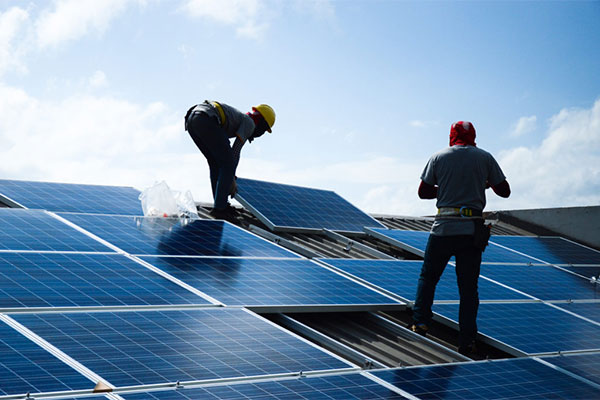Steven Bushong — Solar panel manufacturers produce a steady stream of news about advancements made in labs. Often, news heralds a higher efficiency solar cell—usually a few tenths of a percent at a time.
“Any corporation out there, from Apple to Ford, wants to show they’re continuing to innovate and answering the needs of their customers,” said Daniel Chang, product manager at Trina Solar. “They’re saying, ‘We’re walking the walk.’”
Sounds good. But, from a technical standpoint, is a few tenths of a percent really that important?
“People seem to think of this like test scores—a 100% versus a 99.5%,” said Tom Thompson, key account manager at JA Solar. “They think, what’s the big deal? But it is a big deal.”
These small improvements have at least two important consequences, according to experts. First, even a small efficiency increase can make a remarkable reduction in installed cost. And second, they contribute to the long-term success of solar technology.
“A one-point rise in module efficiency (e.g. 16% to 17%) is worth about 1.5 to 3 cents per watt in installation cost savings,” said Lyle Rawlings, president and CEO of Advanced Solar Products. “In any space-constrained project, it can make the difference between a sale and no sale.”
In the 1980s, solar modules sold for $100/watt. Improvements in manufacturing, such as the way a cell is doped or cut from raw material, have cut manufacturing costs to about $.50/watt.
“Every time our industry doubles production, costs drop by about 20%,” Thompson said.
For solar installers to benefit from increased solar cell efficiencies, R&D needs to make it into a company’s manufacturing line, and at a price consumers are willing to pay.
A typical module can take three months to two years to complete the whole process, experts said.
“The go-to-market process includes data sheets, installation manuals, collateral, sample modules and certifications,” Chang said. “All of those little parts need to be taken care of before we can sell.”
Chang said most reported efficiency improvements eventually make it into manufacturing, especially as the go-to-market process in the solar industry matures. But companies must also consider their manufacturing capacity and the stomach of customers.
“If we were to ask our production team to make something that’s not going to sell, it’s cannibalizing on what we can currently produce,” Chang said. “We’re constantly listening to our customers.”
As the industry matures, it appears customers continue to demand higher efficiencies at lower cost, and module companies are happy to report on their progress, which comes with one more benefit: Higher efficiency modules mean fewer are needed for a target output, and solar can reduce the ecological footprint of energy production even more.
*Published with permission.
















Comments